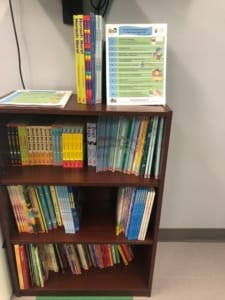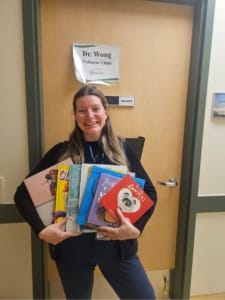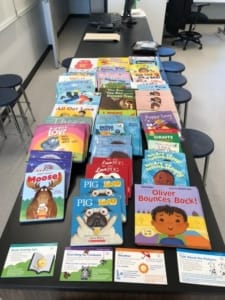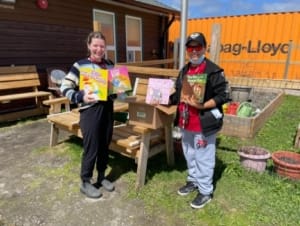Bridging the Literacy Gap in Northern Ontario: A Pediatric Residents’ Grant Initiative
In 2021, the Canadian Pediatric Society released a position statement on the importance of early literacy on future health outcomes. With both of us being avid readers, we felt like one of the best way to promote early literacy is through reading. As pediatric residents, we have seen firsthand how early literacy is key to a child’s development. From language skills to school readiness, reading shapes a child’s future. But for children in Northern Ontario—especially North of Thunder Bay, amongst First Nations reserves—access to books is a significant challenge. This gap in resources inspired us to launch Literacy in Northern Ontario, a project aimed at improving early literacy by providing access to books and promoting the importance of reading within these communities that both of us serve as pediatric residents working in Thunder Bay.
Living in Northern Ontario, we noticed that many remote areas lack physical bookstores, and for families with limited financial resources, buying books is often out of reach. Families of lower socioeconomic status sometimes also have less awareness and education on the importance of early literacy. Children in low socioeconomic communities are almost 2× as likely to be behind in early development skills as high-socioeconomic status peers and parents’ reading habits play a large role in determining how often kids read. Our goal was simple: to ensure that every child, regardless of where they live or their family’s economic situation, could grow up surrounded by books. Early exposure to reading is crucial for language development, cognitive growth, and overall well-being of both parents and kids, and we wanted to make sure the children in these communities had that opportunity.
In order to achieve our goal, we decided to set up book nooks in several different locations where we would be able to reach the most children in need. So far, we have been able to create book nooks in Thunder Bay, Sioux Lookout, Timmins, Neskantaga, Mishkeegogamang and Kingfisher Lake, and we are still hoping to expand our book nooks to more communities.
As with any meaningful project, we faced several challenges. First, getting books to remote communities presented logistical hurdles. Shipping to remote areas can be expensive and time-consuming. We were able to get books to Northern communities mostly by our own residents travelling to the communities and bringing the books with them.
Additionally, we had to ensure the books were culturally safe and diverse —finding stories that reflect the unique experiences of First Nations children and diverse communities in the north was a priority for us. We also tried to get some books with multiple languages to represent our diverse populations. Hence, we triaged books that were donated and were very thorough in our own selection.
Funding was another major challenge. Despite the recognized importance of early literacy, securing financial support for a project like ours was key to the success of our project. We were extremely lucky to get the support of the Pediatricians Alliance of Ontario and the Canadian Pediatric Society through resident advocacy grants. We also partnered with Scholastics for book donations and discounts, with the Canadian’s Children Literacy Foundation and with multiple other community partners.
We also wanted to create a project that would be sustainable. First of all, we designed some of our book nooks to be in the style of “take a book, leave a book” to have some rotation of books new and old. However, we were cognizant not to set this up in all locations considering that some families who might not have a book to give should still take advantage of the book nooks.
To make the project enduring in terms of future outcomes, we also created pamphlets for parents with simple tips on fostering literacy at home in order to not only spread books but spread some knowledge and education. We had some education sessions with local community organizations over the summer as well.
Despite the challenges, Literacy in Northern Ontario has seen great success. To date, we’ve established six book nooks that are now filled with a variety of books for children of all ages. These spaces have become more than just places to borrow books—they’ve become places of connection. Parents and healthcare providers alike have shared how the books offer children comfort and entertainment during medical appointments, while also fostering a love for reading. One of the most rewarding aspects has been seeing children’s enthusiasm for books and being able to choose something to bring home, for them and for siblings.
While we are proud of what we’ve accomplished so far, our work is far from over. We plan to expand our project to reach even more communities across Northern Ontario, continuing to provide books and resources to children who need them most. We are also exploring new partnerships to keep the momentum going and to ensure that literacy remains a priority in these communities. Our project goes beyond simply distributing books; it’s about making a meaningful difference. As pediatric residents, we are acutely aware of the impact we can have—not just in the clinic, but within the communities we serve. Promoting literacy in Northern Ontario is our way of supporting children’s growth, helping them develop the skills they need to thrive.
Marie Albert and Anne-Sophie Gervais





